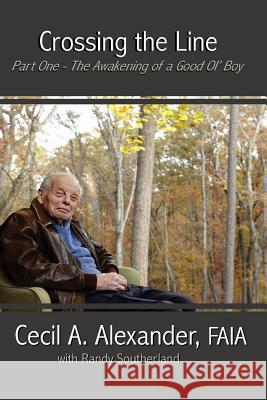Crossing the Line: The Awakening of a Good Ol' Boy » książka
Crossing the Line: The Awakening of a Good Ol' Boy
ISBN-13: 9781479256051 / Angielski / Miękka / 2013 / 502 str.
A Memoir Beginning in 1918 - A profile in courage: the life of Cecil Alexander, Jr., a hero in war and a visionary in peace. In World War II, Alexander flew 60 bombing missions and was twice honored with the Distinguished Flying Cross. In peace-time, he studied at Georgia Tech, Yale, M.I.T., and Harvard with the brightest minds of his generation in architecture and design, and then returned home to help build a new Atlanta. In Alexander's vision, Atlanta should become a city modern in its skyline and modern in its thinking. The creation of uniquely beautiful buildings and the struggle for racial equality went hand-in-hand for Alexander, serving his conviction that it was possible to live bigger, and better, and more justly. He is a founding father not of old-time Terminus, but of today's dazzlingly contemporary, international, harmoniously diverse city.
Melissa Fay Greene Author "Praying for Sheetrock, The Temple Bombing, Last Man Out, There Is No Me Without You, No Biking in the House Without a Helmet"
In his memoir, Cecil Alexander describes a life that took him from provincial attitudes as a youngster born Jewish in the South in 1918, to one of the broadest humanitarian perspectives of his generation. His story traces early 20th Century Atlanta, a slow-paced place where his Scottish terrier rode the trolley down Ponce de Leon Avenue to the family hardware store, and Cecil played sandlot baseball with pals until twilight darkened into night. An Ivy League education offered him new vistas, but it wasn't until after his World War II experience, detailed in "Part Two: The War Years," when he returned to a racially divided and tense United States, that he truly began to "cross the line" and again put his own life "on " the line, this time in support of civil and human rights. Concurrently, he built a stellar career as an architect, having studied at Harvard under some of the Bauhaus luminaries, and, interacting with the power structure in Atlanta, became a pillar of the civic community as well as the Jewish community. His marriage in 1943 to Hermione Weil of New Orleans led to a forty-year romance that ended suddenly and tragically with the death of his wife in a collision with a teenage drunk driver. His healing process led him to the other love of his life, Helen Eisemann Harris Mantler, with whom he has enjoyed his later years, along with children, grandchildren and great grandchildren.
Zawartość książki może nie spełniać oczekiwań – reklamacje nie obejmują treści, która mogła nie być redakcyjnie ani merytorycznie opracowana.











